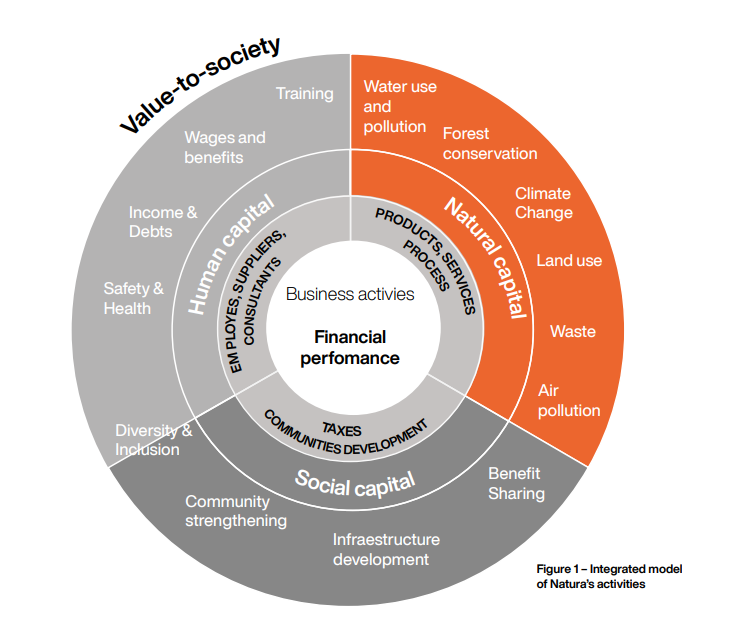While the rest of the world is growing, Latin America and the Caribbean currently contribute only 5.44% to the global GDP (in terms of Purchase Power Parity), experiencing economic contraction. Yet, the region still possesses a massive economic growth potential due to its abundant natural resources, which have historically fueled its main economic activities and overall development.
Accordingly, when it comes to the task of biodiversity preservation, the preoccupation with Latin America is quite exceptional. The Amazon Forest alone is home to 10% of the world’s known species. If the number of species is not as awe-inspiring, let’s talk money: the economic potential of the Amazon Forest is estimated at USD 317 billion per year.
Latin American governments are privileged to have plenty of resources to leverage in favor of their economic development, but as we all know, resources are not infinite. As much as nature can regenerate itself, at this pace it will be soon pushed to its tipping point, when damage is irreversible.
The private sector, as one of the main players in generating social and economic value, is strongly responsible for the sustainable development of the region. Generating economic growth by preying on indigenous communities’ rights, depleting natural resources, and causing harm to local communities – generating air, sound, and water pollution, should not be considered real development.
In this article, we will explore how companies have been juggling their essential need for constant growth and financial viability with the increasing pressure on being more socially and environmentally responsible. While some companies try to cover up their wrongdoings with appealing green packaging, others, like Natura &Co, embed sustainability principles from their business model to the conception of their products.
Commitment to Corporate Sustainability is not about ‘being nice’, it’s a timely business strategy
Focusing only on short-term financial goals is, by no means, a smart choice in terms of the long-term viability of societies, ecosystems, and businesses. Many of Natura &Co’s products’ ingredients come from native plants in the Amazon. Now consider the following scenario where such company irresponsibly exploits these resources:
How are they supposed to produce some of their cosmetics in the face of the extinction of essential plants? What about the subsistence of local communities that supply them with these raw materials? What about the children of these communities, how will they finish school if their parents then ask them to also work to help with household expenses?
Hopefully, now, the reader can easily comprehend how business choices deeply affect the systemic development of a society.
As scholars, governments, and companies came to the realization of how serious this issue is, many frameworks were developed to advocate for business operations that consider ‘people, planet and profit’. This concept is often referred to as the ‘triple bottom line‘, that is what also CSR (Corporate Social Reponsibility) and ESG (Environmental, Social and Governance) are about. For simplicity – and an easier read, I chose to refer to business activities that embrace this holistic thinking as ‘Corporate Sustainability’.
Even with the increase of scrutiny over companies’ sustainability practices, many try to explore regulation loopholes and workarounds for their harmful business practices, without any substantial change, avoiding the costs of the transition to more sustainable business approaches. And this is when greenwashing typically takes place.
Greenwashing is trying to cheat the system: misleading customers, promoting that certain products or services are good for the environment, while it’s just a matter of changing the color scheme, or simply a shift in the narrative in social media channels. The company most likely continues its environmentally and socially harmful practices, while benefiting from the goodwill of consumers that want to support companies that are good for the world.
The good news is that many publications help us spot companies that are truly putting effort into improving their performance when it comes to sustainability. In the Latin American Atlas of Corporate Sustainable Initiatives, authors introduce key elements they consider essential when trying to identify effective sustainability solutions in the private sector.
When looking to identify businesses that truly commit to sustainability and development, we must look at three elements: level of stakeholder engagement, the presence of a shared-value-creation approach by compensating sustainable suppliers well, and how much the company embraces circular economy practices. Next, we will dive into the case of Natura &Co, a global beauty company headquartered in Latin America that does a good job in all of those.
A global ‘Sustainability Trailblazer’: Natura &Co Latin America
Natura &Co is a global group of different beauty brands that started out with the Natura brand in São Paulo, Brazil (1969) and now is composed of Aesop, The Body Shop, and Avon International. In 2022 Natura &Co ranked 9th place in terms of annual beauty sales, just behind globally established brands like L’Oréal and Unilever.
The most recent GlobeScan SustainAbility Leaders Survey, which lists global Corporate Sustainability leaders, ranks Natura &Co in 4th place, just behind Patagonia, Ikea, and Unilever. Much of this reputation is due to Natura &CO Latin America’s (the business unit where it all started) early commitment to sustainability. Deep engagement with the Amazon Forest’s preservation and voluntary reporting from the 2000s contributed to the company’s fame as Latin America’s ‘Corporate Sustainability Darling’.
Natura does more than a good quality Sustainability Report. From hosting panels at COP26, their governance structure, executives’ remuneration policies, and Sustainable-linked bonds, one can see how the values of sustainability can be efficiently embedded in a company’s DNA.

(Source: Natura &Co’s YouTube Channel: Amazonia is the way to our future: Recorded Live in Edinburgh, 2022)
In an interview for NOVAsia Magazine, Thais Espiladora – Natura &Co Latin America’s Sustainability Intelligence Coordinator – , talked about how environmental sustainability, social responsibility, and value co-creation are at the core of the company’s strategies from the conception of its business model:
“The business model is based on turning socio-environmental challenges into business opportunities, which is not a reactive response to external pressure like other companies in the market do. We do it voluntarily. As Natura &Co Latin America, we expect nothing less than being at the top of the class.
We truly believe, and it is legitimate, that you can connect both (profitability and compliance with corporate sustainability regulations and standards). We don’t see sustainability as just a ‘toll’, we see it as an opportunity.”
From 2014, Natura has been developing what they now call ‘IP&L’, which is their own methodology to account for Integrated Profit & Losses – allowing them to actually quantify their impacts (positive or negative) on natural, social, and human capital. Through this, they’re able to integrate sustainability into finance and their decision-making process.

(Source: Natura &Co: Integrated Profit & Losses Accounting Report 2021)
When inquired if this constant adaptation to the recurring stream of new standards, even going as far as developing its own tool to quantify their impact is worth it, Ms. Espiladora mentioned that there is a good side and a bad side of being compromised with sustainability to the extent Natura &Co Latin America is:
“There is a ‘bright side’ and a ‘shadow side’ to being protagonists in this integrated reporting agenda and valuing transparency. The bright side is about raising the bar, being a protagonist, and actually assuming leadership. We want to be recognized as leaders in Reporting and ESG in Latin America and globally.
But there is this ‘shadow side’, where sometimes we feel like we’re alone in this agenda, since one of our main principles is transparency. We know that many companies in their annual sustainability reports tend to focus more on the positive aspects, whereas we present both the positive and negative aspects, regardless of whether it will have a negative impact on the market or not.”
It’s undoubtedly good to be sustainable, but does it really pay off?
To be transparent, going beyond what is asked could be a lonely path for companies that are deeply engaged with sharing value for all through their business operations. Also, it can be somewhat hard to justify investments toward the alignment with this approach when no one is doing it yet, or no one is asking them to do so yet.
But the good side of being like Natura and other Sustainability Leaders is that, surely, they will have lower transition costs since they are already doing what will probably be legally required in 5 years. While some companies now struggle to adjust to recent environmental regulations, like the EU Taxonomy, Natura &Co’s alignment with main reporting standards already prepared their management and operations for this moment.
Considering climate change, biodiversity preservation, and other agendas as relevant matters to their business, also gives companies more resilience, alongside shielding them from reputational and legal risks. Being the ‘firsts’ also gives them the advocacy power to influence and set the tone of these progressive agendas in the corporate sphere.
Sustainability does pay off, if not visible in monetary terms now, in the near future it certainly will. In the words of Thais Espiladora “If you don’t have Sustainability deeply rooted in your DNA, in some time you will cease to exist. As a company, when you value sustainability, you value the resilience and viability of your own business”.

Brenda Silveira, a Brazilian international business major at Ewha Graduate School of International Studies, is dedicated to exploring the intersection of business, sustainability, and innovation with a purpose of finding practical and groundbreaking approaches to help companies to succeed as they contribute positively to the environment and society. Her current research focuses on Corporate Sustainability Reporting and Narratives. Beyond academia, Brenda is also deeply interested in entertainment, culture, and technology.
- “I Love My Body”: Hwasa and Female Empowerment in K-Pop and Korean Society - May 6, 2025
- English Fever in South Korea - February 24, 2025
- South Korea’s Medical School Expansion – Cure Worse than the Disease? - October 20, 2024






